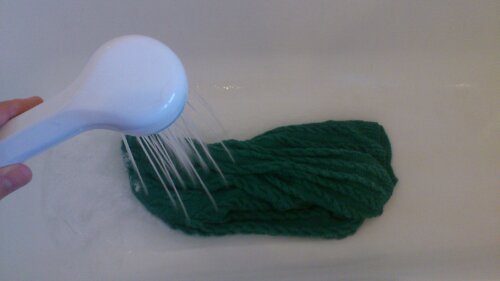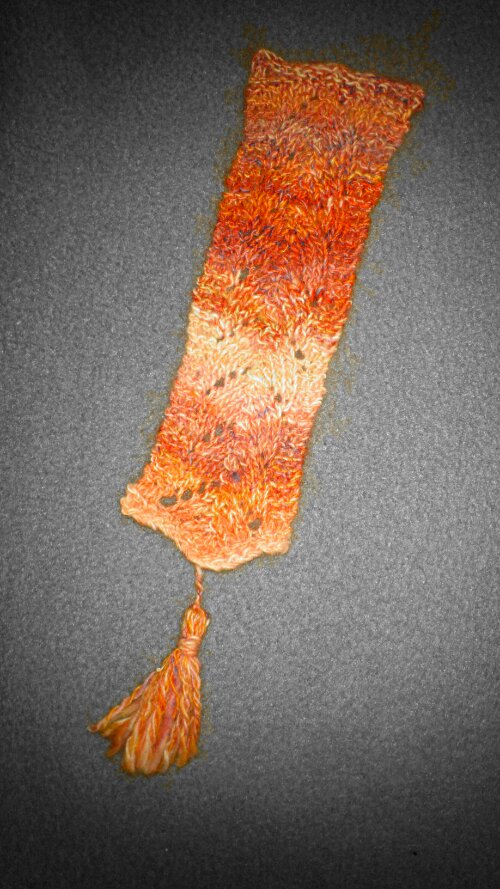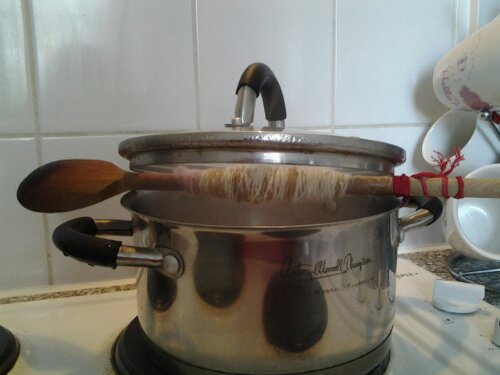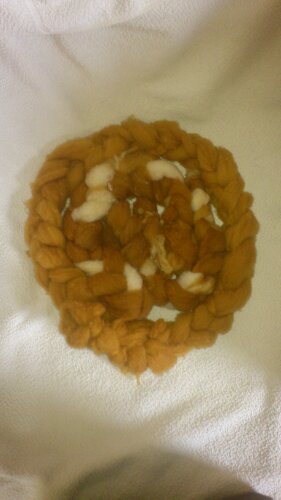As it was trying to hygienically clean a blanket after an illness that prompted the first post on this blog, I felt it would be appropriate to document my ongoing experiments with other antimicrobial cleaning methods and yarn.
I’m sure plenty of people might have sterilising fluid at the back of their cleaning cupboard, and if not it is cheaply purchased from most supermarkets and pharmacies. Most brands exist to quickly and safely sterilise baby equipment in cold water. Milton, which I used, is such a brand.
Now, arcrylic is made by spinning and carding very fine plastic fibres into yarn. It is plastic, like the equipment sterilising fluid is designed to clean, and it can survive cold water treatments very well, which is exactly what sterilising fluid requires of its sterilis-ees.
You can see where this is going.
First, a disclaimer, the only fabric for which Milton guarantee complete sterilisation is wipeable plastic protective clothing, THEY NEVER MENTION YARN, this is my experiment and I am not a microbiologist or chemical engineer – I AM IN NO POSITION TO GUARANTEE FULL STERILISATION ON YARN, EITHER.
Now that’s out of the way, I think compared to boiling this is more likely to produce a wearable fabric post-cleaning, and soaking plastic fibre for 12 hours in sterilising solution should kill most left over bugs to the tolerance of an average adult immune system.
I made up a solution at the dilution Milton recommend for baby equipment and left a swatch in it overnight (15 minutes is sufficient to sterilise a smooth surface on a baby bottle, but the tightly wound fibres in yarn would need to be soaked and submerged for longer to reach all their surface area). The dark purple is a 50/50 wool/arcrylic blend, the cream and pink are 100% arcrylic – I chose the colours to test for colour-fast-ness and to see if the cream would take on any colour from the fluid.
As you can see in the before and after shots below, all the yarns survived and when rinsed in lukewarm water and a little hair conditioner (my fabric conditioner of choice) they blocked normally.
Now they’re dry they’re absolutely fine! Super soft and fluffy, thanks to the low temperature, and they have no smell – thanks to the low odour of the fluid. Even the wool blend seems fine, and Milton do say that their fluid can degrade the protein fibre of animal wool.
If anybody has any experience in this area, do comment and share – this is a new, experimental world for me!
Before:
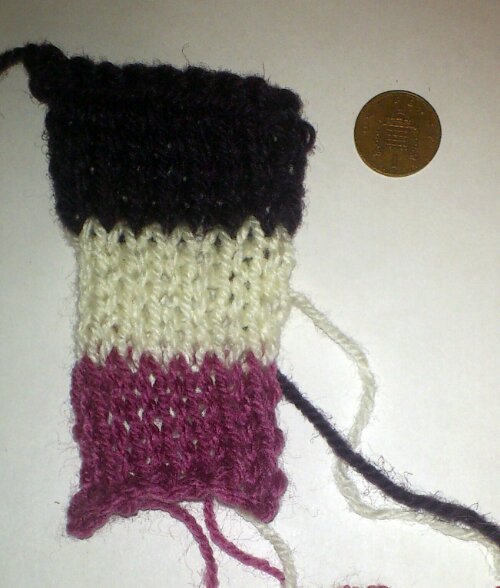
After:




